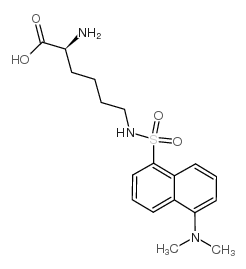Lateral phase separation of phospholipids as a basis for increased permeability of membranes towards fluorescein and other chemical species.
G M Humphries, J P Lovejoy
Index: J. Membr. Biol. 80(3) , 249-56, (1984)
Full Text: HTML
Abstract
Using mouse spleen cells, before and after treatment with glutaraldehyde or mild hyperthermia, we observe a strong correlation between permeability to fluorescein and susceptibility to staining with N epsilon-dansyl-L-lysine (irrespective of the cells' ability to exclude trypan blue). We observe the same correlation using liposomes prepared from phosphatidylcholine and varying amounts of cholesterol. We have recently introduced N epsilon-dansyl-L-lysine as a fluorescent membrane stain, or "probe," whose uptake, we propose, is selective for phospholipid domains in membranes (G.M.K. Humphries & J.P. Lovejoy Biophys. J. 42:307-310, 1983; G.M.K. Humphries & J.P. Lovejoy J. Membrane Biol. 77:115-122, 1984). The results presented here are consistent with the hypothesis that the presence or absence of phospholipid domains in membranes also modifies their permeability toward fluorescein, and suggests that permeability towards other chemical species may be similarly affected. On the basis of work using liposomes, we believe this to be the case for carboxyfluorescein and for glucose.
Related Compounds
| Structure | Name/CAS No. | Molecular Formula | Articles |
|---|---|---|---|
 |
Dansyllysine
CAS:1101-84-4 |
C18H25N3O4S |
|
Determination of binding conformations of drugs to human ser...
1998-03-01 [J. Pharm. Sci. 87 , 379-386, (1998)] |
|
Cholesterol-free phospholipid domains may be the membrane fe...
1983-03-16 [Biochem. Biophys. Res. Commun. 111(2) , 768-74, (1983)] |
|
The use of dansyl lysine to assess heat damage and thermotol...
1988-05-01 [Int. J. Radiat. Oncol. Biol. Phys. 14(5) , 983-8, (1988)] |
|
Measurement of DNA and antigen expression of live cells usin...
1990-01-01 [Cytometry 11(4) , 533-8, (1990)] |
|
Dansyl lysine: a structure-selective fluorescent membrane st...
1983-06-01 [Biophys. J. 42(3) , 307-10, (1983)] |